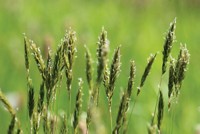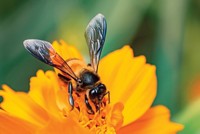Advertisement
Grab your lab coat. Let's get started
Welcome!
Welcome!
Create an account below to get 6 C&EN articles per month, receive newsletters and more - all free.
It seems this is your first time logging in online. Please enter the following information to continue.
As an ACS member you automatically get access to this site. All we need is few more details to create your reading experience.
Not you? Sign in with a different account.
Not you? Sign in with a different account.
ERROR 1
ERROR 1
ERROR 2
ERROR 2
ERROR 2
ERROR 2
ERROR 2
Password and Confirm password must match.
If you have an ACS member number, please enter it here so we can link this account to your membership. (optional)
ERROR 2
ACS values your privacy. By submitting your information, you are gaining access to C&EN and subscribing to our weekly newsletter. We use the information you provide to make your reading experience better, and we will never sell your data to third party members.
Environment
Poison Ivy Could Get Worse
Plants grown under elevated CO2 levels pack a more allergenic punch
by Ivan Amato
June 5, 2006
| A version of this story appeared in
Volume 84, Issue 23

Poison ivy (toxicodendron radicans), when grown in air with elevated carbon dioxide levels that could resemble those in the atmosphere in 2050, grows faster and produces a more noxious mixture of chemical irritants than it does under present conditions, a team of researchers has found. (Proc. Natl. Acad. Sci. USA, published online May 29, dx.doi.org/10.1073/pnas.0602392103).
T. radicans and related Toxicodendron species grow throughout most of the world. According to the American Academy of Dermatology, between 10 million and 50 million Americans suffer an allergic rash each year due to contact with poisonous plants, most notably poison ivy, sumac, and oak. How these plants respond to increases in atmospheric carbon dioxide could have a bearing on human health on a global scale, conjectures Jacqueline E. Mohan of the Marine Biological Laboratory's Ecosystems Center in Woods Hole, Mass.

During five growing seasons of the now decade-long Duke University Free-Air CO2 Enrichment (FACE) experiment, Mohan, William H. Schlesinger of Duke University, and coworkers there and at West Virginia University and the U.S. Department of Agriculture compared poison ivy plants growing in forest plots exposed to ambient air with cohorts growing in plots rigged with a piping system for enriching the air in carbon dioxide. Although previous studies showed that most woody plants put on almost one-third more biomass annually when grown in CO2-enriched air, "poison ivy shows the greatest response," growing about two-and-a-half times faster than control plants, Schlesinger says.
What's worse, the researchers note, this enhancement of mass is accompanied by a troublesome shift in the proportions of the irritant compounds (pentadecylcatechols) in the plant's urushiol oil, the yellow sap that triggers the plant's signature blistery red rash. The most consequential chemical change is that the concentration of the oil's saturated congener decreases by 61% while the triene congener goes up by 153%. Urushiol's ability to elicit allergic responses increases as the ratio of the oil's unsaturated to saturated components increases.

Paul R. Epstein, associate director of Harvard Medical School's Center for Health & the Global Environment, says the new findings fit a pattern of plant responses to changes in global conditions. For example, in his own studies of ragweed growing in CO2-enriched air in greenhouses, he and his coworkers have found that the weed's stalks grow 10% larger and the plants produce about 60% more pollen. "What these studies are showing is there is a disproportionate response of the pollen in these weeds and of the toxicity of poison ivy," Epstein says.
In the coming decades, Schlesinger predicts, "poison ivy will be a more dangerous plant." And the researchers suggest that ever higher CO2 levels in the atmosphere could have additional botanic effects with consequences for quality of life. Poison ivy is part of a larger taxonomic category that includes mango, cashew, and pistachio, all of which can be allergenic. "It is possible that these plants, too, may become problematic in the future," the researchers warn.
There could be some welcome outcomes among the litany of bad ones. Epstein points out that it's the weedy, viney, opportunistic plants that respond most to environmental changes like temperature and carbon dioxide levels. Says Epstein: "It could be lovely to have lots more raspberries."





Join the conversation
Contact the reporter
Submit a Letter to the Editor for publication
Engage with us on Twitter